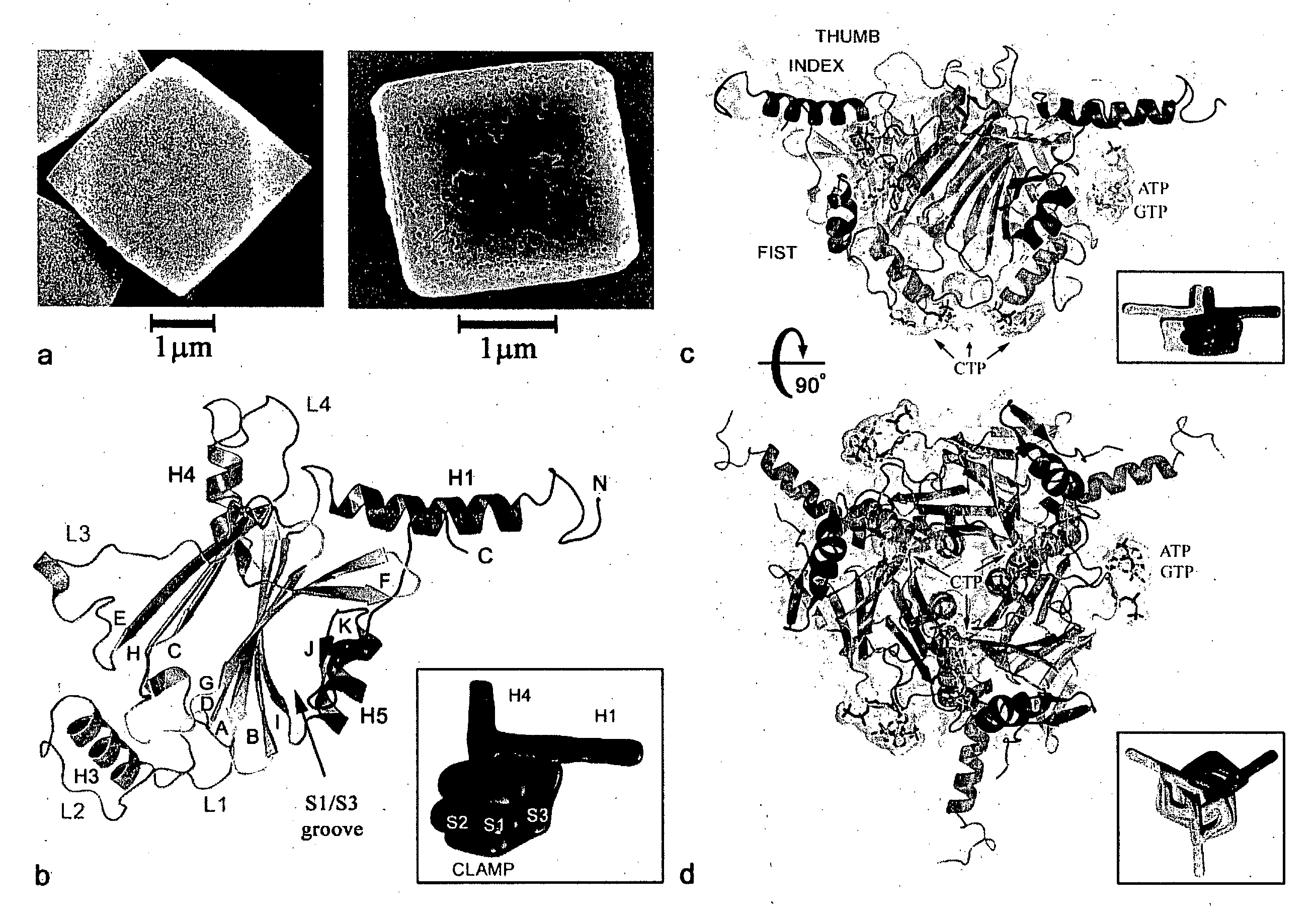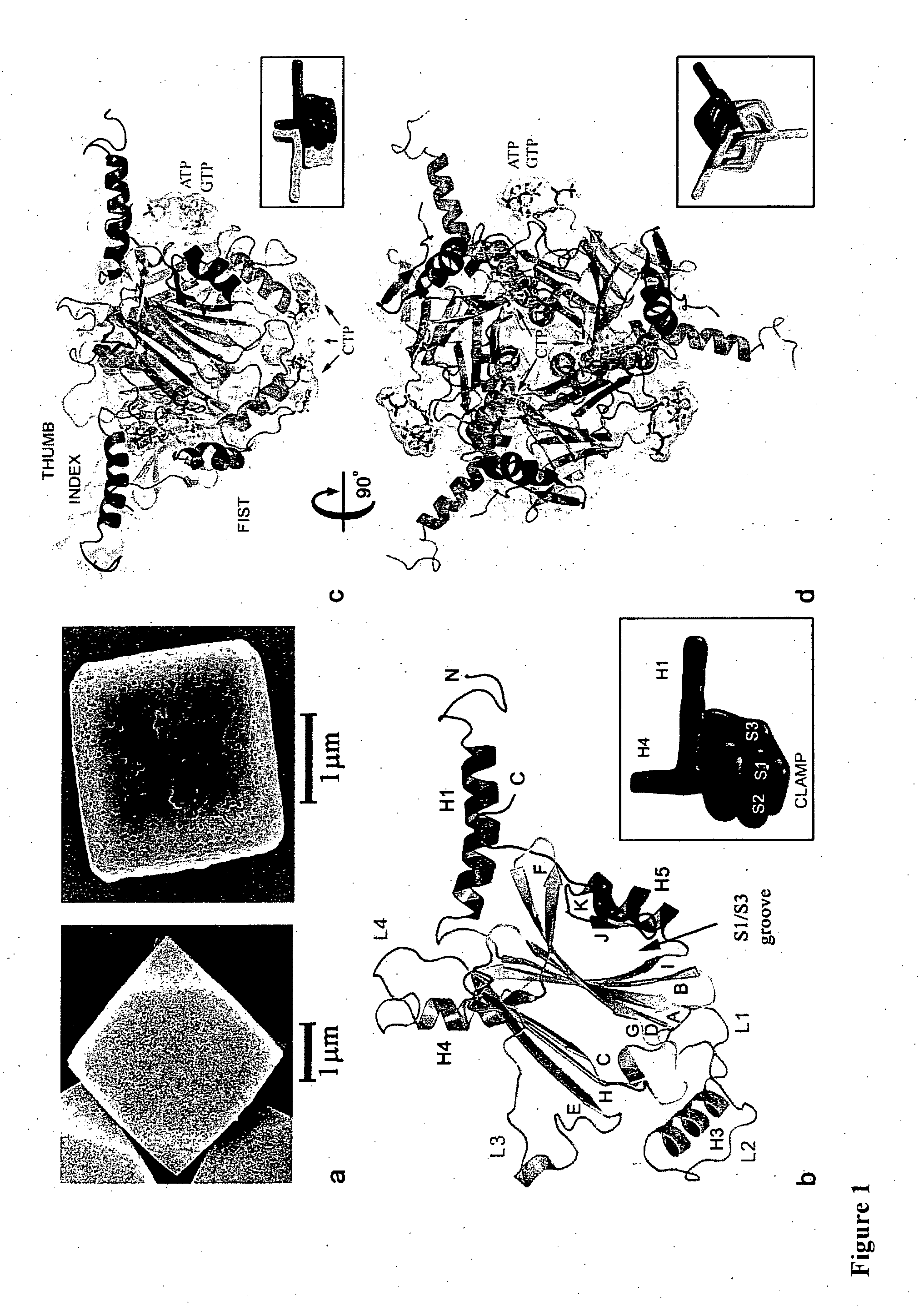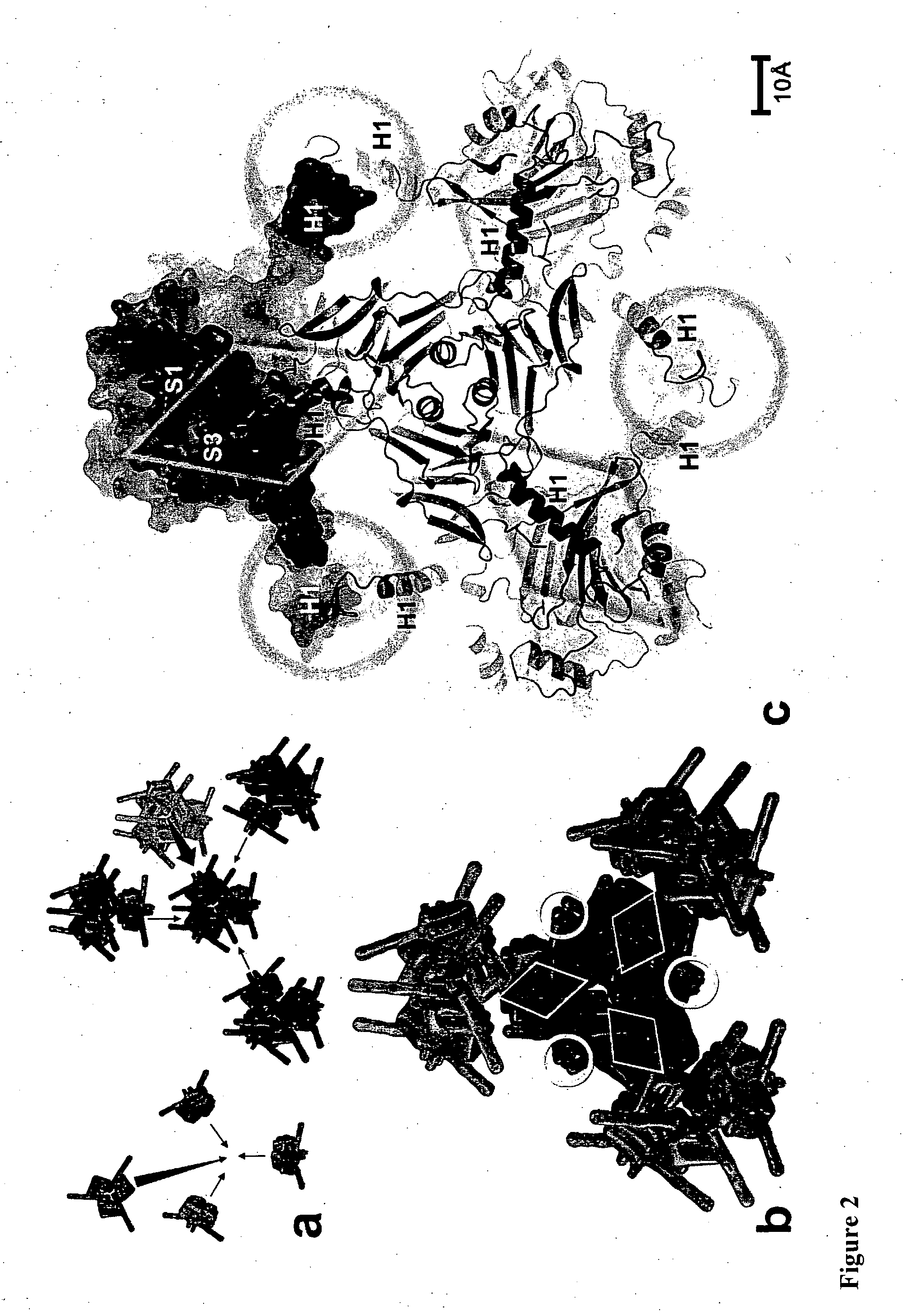Viral polyhedra complexes and methods of use
a polyhedra complex and polyhedra technology, applied in the field of viral polyhedra complexes and methods of use, can solve the problems of hampered polyhedra protein structure determination, and achieve the effects of preserving, prolonging or protecting the functionality of a target molecule, facilitating the identification of regions, and enhancing the functionality of the target molecul
- Summary
- Abstract
- Description
- Claims
- Application Information
AI Technical Summary
Benefits of technology
Problems solved by technology
Method used
Image
Examples
example 1
Polyhedra Expression and Characterization
[0104]Expression and purification of recombinant and wild-type Bombyx mori CPV polyhedra in insect cells were carried as described elsewhere (Mori et al 1993). Polyhedra containing the human ZIP-kinase (Accession BAA24955) fused to an N-terminal fragment of the CPV turret protein were produced as previously described (Ikeda et al 2006). Scanning electron microscopy was performed on Pt coated samples. Mass spectrometry analyses confirmed the presence of ribonucleotide tri-phosphates in purified polyhedra and showed that acetylation of the N-terminal alanine is the only polyhedrin post-translational modification.
example 2
Structure Determination
[0105]Crystals were spread on micromesh mounts (Thorne et al 2003) leaving a thin film of 50% ethylene glycol and data were collected at 120K on the MD2 diffractometer of the X06SA beamline (Swiss Light Source) with a strongly attenuated beam focused onto the crystal. Data were processed with Denzo / Scalepack (Otwinowski et al 1997) in space group I23 and datasets from 2-4 crystals were merged because of severe radiation damage. Successful heavy atom soaks were performed on recombinant polyhedra at high concentrations, usually half saturation in appropriate buffer. Heavy atom sites for four isomorphous derivatives including selenomethionine-substituted crystals were found by SHELX24 and refined at 2.6 Å using SHARP25. The structures of recombinant and infectious polyhedra and of polyhedra containing the ZIP-kinase were refined at resolutions of 2.1 Å, 1.98 Å and 2.45 Å respectively using Refmac526. The final models are essentially identical. The structure of in...
example 3
Model Analysis and Illustrations
[0106]The oligomeric and crystal contact interfaces were characterized with AREAIMOL from CCP428 and the PISA29 server at the European Bioinformatics Institute. Solvent cavities and channels were analyzed with VOIDOO30 (Uppsala Software Factory). Illustrations were prepared with PyMOL v0.99 (DeLano Scientific, San Carlos, Calif., USA. http: / / www.pymol.org).
PUM
| Property | Measurement | Unit |
|---|---|---|
| diameter | aaaaa | aaaaa |
| pH | aaaaa | aaaaa |
| pH | aaaaa | aaaaa |
Abstract
Description
Claims
Application Information
 Login to View More
Login to View More - R&D
- Intellectual Property
- Life Sciences
- Materials
- Tech Scout
- Unparalleled Data Quality
- Higher Quality Content
- 60% Fewer Hallucinations
Browse by: Latest US Patents, China's latest patents, Technical Efficacy Thesaurus, Application Domain, Technology Topic, Popular Technical Reports.
© 2025 PatSnap. All rights reserved.Legal|Privacy policy|Modern Slavery Act Transparency Statement|Sitemap|About US| Contact US: help@patsnap.com



